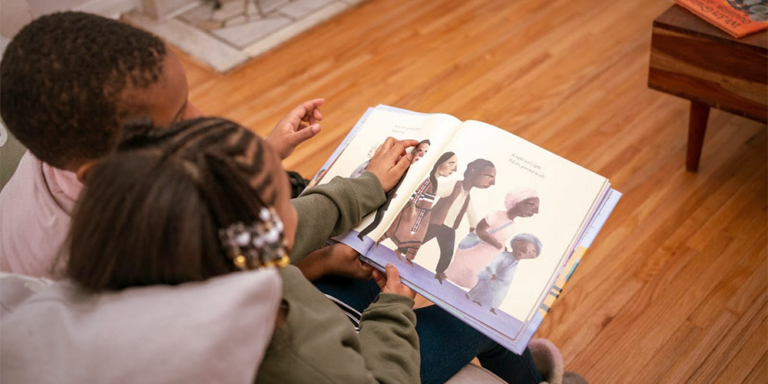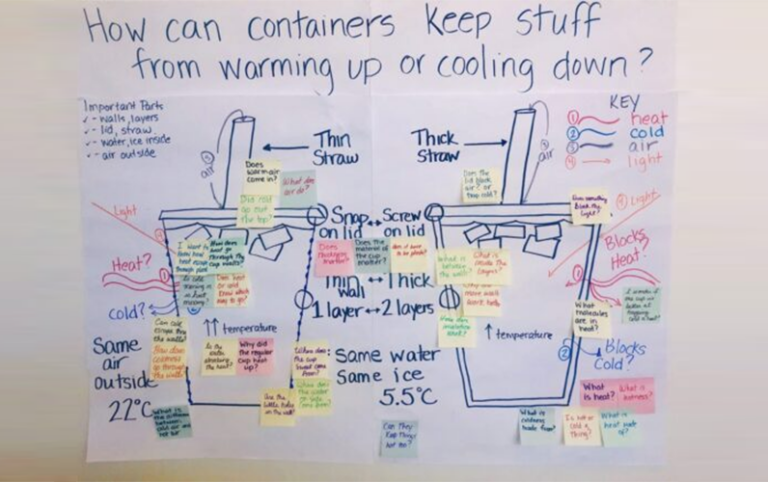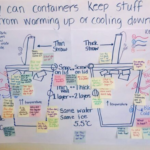Come test time, even the best lesson plans can soar over a student’s head if their working memory doesn’t allow them to retain what they’ve learned. Memory can impact every aspect of a student’s academic life. It can impact how much they take away from the classroom at the end of the day, as well as how much studying they need in order to be ready for an upcoming test. So, how can educators improve their students’ working memory and help them succeed? Let’s discuss the importance of memory and classroom activities that teachers can use to boost recall.
Types of Memory Explained
So, what is working memory? How does it differ from and play into long-term memory, short-term memory, and sensory memory? It’s important to understand how the different types of memory work in order to help strategize methods to boost your students’ working memory. Here’s a breakdown of the different types of memory and what they mean for your student:
- Long-term memory is the storehouse of long-retained knowledge and gleanings from past experience. Long-term memory can involve fond memories or the basis for deeply rooted fears. Most people have a strong sense of long-term memory, no matter their age. Long-term memory often starts to develop between the ages of 1 and 2.
- Short-term memory relates to a collection of more easily accessible memories that can be held in the mind for a limited amount of time. A few examples of short-term memory are remembering details from yesterday’s lesson plan or what you had for lunch today. If they make a big impression, some of these details can eventually be filed away in long-term memory, but most are eventually lost.
- Sensory memory is a brief store of memories of the sensory aspects of an experience. How did a piece of cloth feel? How did a certain meal taste? What did the room smell like? Sensory memories are incredibly short-lived, often decaying within about four days. They are sometimes transferred to short-term memory, or you might remember that you liked or disliked the senses surrounding an experience without retaining the exact sensory memory.
- Working memory is a type of short-term memory, and it is the memory most associated with a student’s academic success. Working memory ties into cognitive and executive function, the part of your memory that helps you retain the steps needed to solve a problem. Working memory ties into short-term memory and sometimes long-term memory to help you accomplish tasks and learn new information.
The Benefits of Enhancing Working Memory
What do academic pursuits look like with a poor working memory? It could mean that students need to read the information over and over and study harder than others in order to ensure that they have the material down. It might mean forgetting little details or clamming up when it comes time for tests. Working memory is an essential part of learning, so the stronger the working memory, the better the student performs.
According to Clark, a type of tutoring software:
Students who have the strongest working memory often have a much easier time recalling information and perform well academically without needing to put in as much work as their peers who don’t have the same level of this cognitive process. These students typically recall information easily, follow instructions closely, are actively engaged in discussion, and volunteer answers frequently.
Clark also suggests ways to identify students who might have poor working memory skills. Look for students who might often exhibit these traits:
- Forgetting instructions or failing to take them all in
- Struggling to pay attention
- Failing to engage with the lesson by asking questions or offering answers
- Struggling with schoolwork or tests
Once you know how to identify poor working memory, you can use the following memory-boosting techniques to work with your students to improve this issue.
8 Classroom Activities to Improve Working Memory
Memory is a muscle. Like any other muscle, the longer it is exercised, the more it can grow and improve. It’s the job of an educator to exercise students’ working memory so that they can flourish. The question is, what counts as exercise? Understood.org suggests incorporating these eight classroom activities designed to improve working memory:
- Visualization: Studies show that people remember 80% of what they see, compared to 10% of what they hear and 20% of what they read. Use imagery when teaching a new concept, or ask students to conjure up an image or even draw something as they learn. The image used will serve as a reminder that helps trigger their working memory.
- Reversed teaching roles: Have you ever experienced the feeling of not being able to grasp something until you try it yourself? Consider flipping the script for your students. Ask them to give a lecture on the material to you. This will not only help them go over the information more thoroughly but also make the experience more likely to stick out in their minds.
- Visual memory games: Matching games are popular for a reason. They boost memory by helping students remember where they’ve seen images before and then put that memory to use. Memorizing license plates or searching for certain words or images can also serve as fun visual memory games.
- Card games: Flash cards have long been used to help students prepare for a test because they add a visual and repetitive element to studying. But even fun card games, like UNO or Go Fish, can help stretch that memory muscle and boost students’ working memory.
- Active reading: Read the subject material out loud in class and break to have discussions. It’s those discussions and input from your students that will stick out in their minds. If you can, encourage students to highlight key information in their books. If not, colorful sticky notes will help emphasize important sections.
- Chunking: Sometimes a new aspect of a subject might feel like information overload to students. It can help to break it into smaller, more digestible chunks. Once students have one chunk down, move on to the next one. This will help them contextualize and better remember each chunk.
- Multisensory activities: Try to engage the senses while you teach. Throughout your lessons, write on the board, and discuss new concepts in a way that incorporates sight and sound. Bring in a tactile example if you have one available. This moves new concepts from being theoretical and abstract to practical.
- Making connections: Mnemonics are a popular method for making connections. Think of the mnemonic many of us learned for the nine planets: “My Very Educated Mother Just Served Us Nine Pizzas.” Connecting a new concept to an interest of your students can also help the material stick out in their minds.






